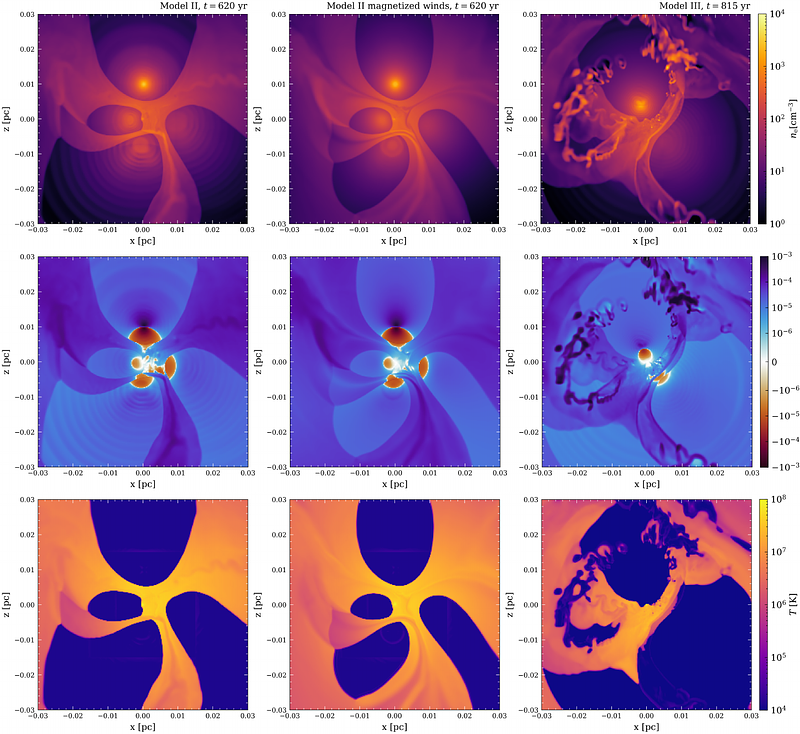Compact stellar systems hosting an intermediate mass black hole: magnetohydrodynamic study of inflow-outflow dynamics

Compact stellar systems hosting an intermediate mass black hole: magnetohydrodynamic study of inflow-outflow dynamics
Matúš Labaj, Sean M. Ressler, Michal Zajaček, Tomáš Plšek, Bart Ripperda, Florian Peißker
AbstractIntermediate-mass black holes (IMBHs) are a missing link in black hole demographics, with only tentative observational evidence to date. Dense stellar clusters such as IRS 13E near the Galactic Center are promising IMBH hosts, where accretion is likely driven by winds from nearby Wolf-Rayet (WR) stars. Yet, the dynamics of such wind-fed systems remain largely unexplored. We investigate how high-velocity stellar winds, magnetic fields, and metallicity-dependent radiative cooling influence gas dynamics and black hole accretion in compact WR clusters. Using three-dimensional (magneto)hydrodynamic simulations, we model each WR star as a source of mass, momentum, energy, and magnetic flux, and include a cooling function that depends on chemical abundance. We compare isotropic versus disk-like stellar distributions to explore the impact of cluster geometry. Across all models, we find that the accretion rate onto the IMBH is suppressed by up to five orders of magnitude relative to the total stellar mass-loss rate. Turbulent, shock-heated outflows driven by wind-wind collisions dominate the flow, expelling most injected gas. While enhanced cooling in high-metallicity runs promotes the formation of dense clumps, these structures are typically unable to reach the black hole. The system's integrated X-ray luminosity is dominated by colliding WR winds, masking the IMBH's radiative signature. Accretion occurs in short-lived, quasi-periodic episodes triggered by close stellar passages, but even these flares remain difficult to detect against the luminous wind background. Our results naturally explain the low detectability of IMBHs in compact WR clusters and provide theoretical predictions to guide future X-ray and infrared observational strategies.